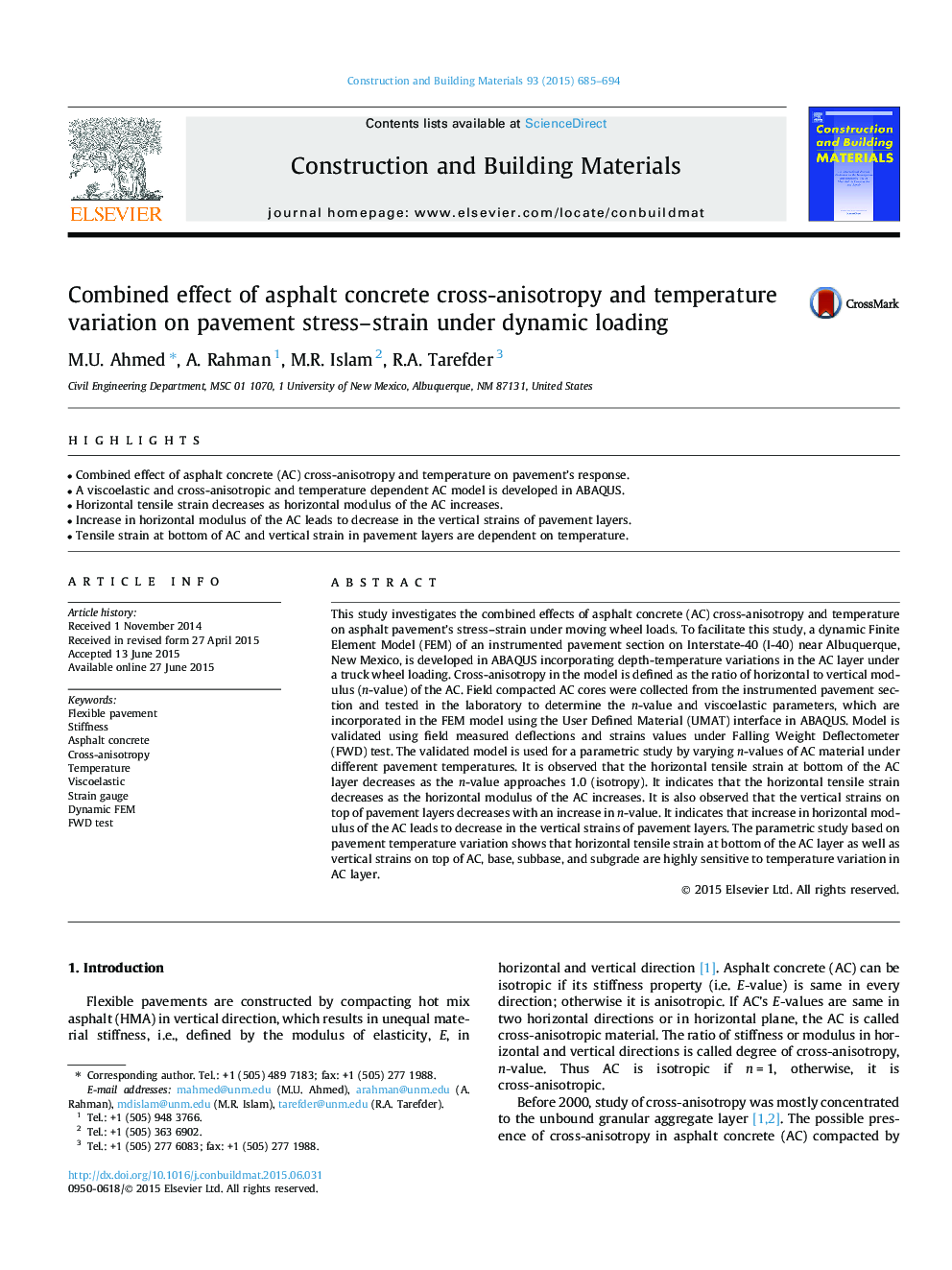| کد مقاله | کد نشریه | سال انتشار | مقاله انگلیسی | نسخه تمام متن |
|---|---|---|---|---|
| 6720639 | 503559 | 2015 | 10 صفحه PDF | دانلود رایگان |
عنوان انگلیسی مقاله ISI
Combined effect of asphalt concrete cross-anisotropy and temperature variation on pavement stress-strain under dynamic loading
ترجمه فارسی عنوان
اثر ترکیبی آستانه برش آسفالت و تغییرات دما بر روی تنش خشکی روانکاری تحت بارگذاری پویا
دانلود مقاله + سفارش ترجمه
دانلود مقاله ISI انگلیسی
رایگان برای ایرانیان
کلمات کلیدی
موضوعات مرتبط
مهندسی و علوم پایه
سایر رشته های مهندسی
مهندسی عمران و سازه
چکیده انگلیسی
This study investigates the combined effects of asphalt concrete (AC) cross-anisotropy and temperature on asphalt pavement's stress-strain under moving wheel loads. To facilitate this study, a dynamic Finite Element Model (FEM) of an instrumented pavement section on Interstate-40 (I-40) near Albuquerque, New Mexico, is developed in ABAQUS incorporating depth-temperature variations in the AC layer under a truck wheel loading. Cross-anisotropy in the model is defined as the ratio of horizontal to vertical modulus (n-value) of the AC. Field compacted AC cores were collected from the instrumented pavement section and tested in the laboratory to determine the n-value and viscoelastic parameters, which are incorporated in the FEM model using the User Defined Material (UMAT) interface in ABAQUS. Model is validated using field measured deflections and strains values under Falling Weight Deflectometer (FWD) test. The validated model is used for a parametric study by varying n-values of AC material under different pavement temperatures. It is observed that the horizontal tensile strain at bottom of the AC layer decreases as the n-value approaches 1.0 (isotropy). It indicates that the horizontal tensile strain decreases as the horizontal modulus of the AC increases. It is also observed that the vertical strains on top of pavement layers decreases with an increase in n-value. It indicates that increase in horizontal modulus of the AC leads to decrease in the vertical strains of pavement layers. The parametric study based on pavement temperature variation shows that horizontal tensile strain at bottom of the AC layer as well as vertical strains on top of AC, base, subbase, and subgrade are highly sensitive to temperature variation in AC layer.
ناشر
Database: Elsevier - ScienceDirect (ساینس دایرکت)
Journal: Construction and Building Materials - Volume 93, 15 September 2015, Pages 685-694
Journal: Construction and Building Materials - Volume 93, 15 September 2015, Pages 685-694
نویسندگان
M.U. Ahmed, A. Rahman, M.R. Islam, R.A. Tarefder,
